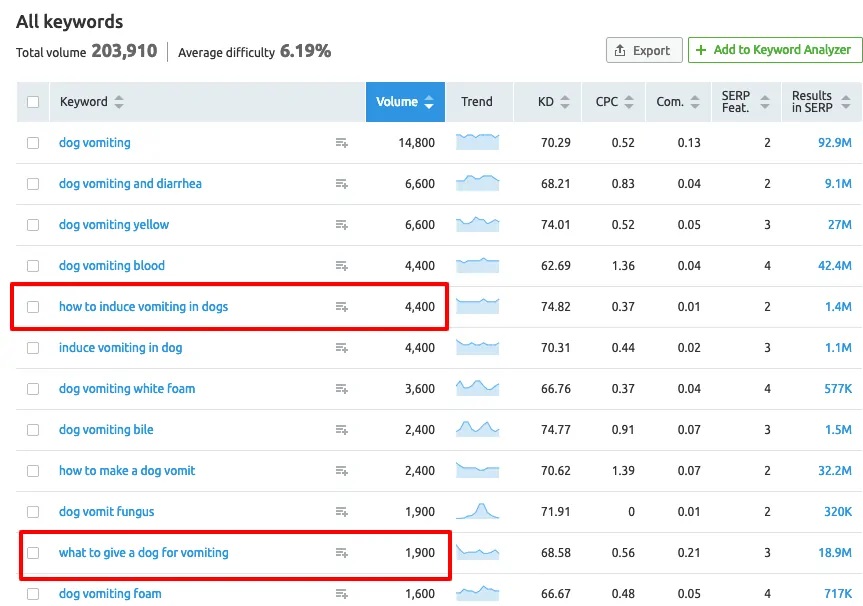essential steps for content creation work
In today’s fast-paced digital landscape, the art of content creation has become a cornerstone of effective communication, online marketing, and information dissemination. Crafting content that not only possesses the qualities of uniqueness and depth but also remains free from the shadows of plagiarism while being strategically tailored for search engine optimization (SEO) demands a sophisticated blend of creativity, meticulous research, and technical expertise. This all-encompassing guide is dedicated to delving into the intricacies of content creation, providing invaluable insights, and presenting a plethora of strategies that empower creators to fashion compelling, authentic, and SEO-friendly content that resonates with audiences.
What is Content Creation:
As per wikipedia Content creation is the act of producing and sharing information or media content for specific audiences, particularly in digital contexts. According to Dictionary.com, content refers to “something that is to be expressed through some medium, as speech, writing or any of various arts” for self-expression, distribution, marketing and/or publication. Content creation encompasses various activities including maintaining and updating web sites, blogging, article writing, photography, videography, online commentary, social media accounts, and editing and distribution of digital media. In a survey conducted by Pew, content creation was defined as “the material people contribute to the online world.”
In simplistic form Content creation is the process of identifying a new topic you want to write about, deciding which form you want the content to take, formalizing your strategy (keyword or otherwise), and then actually producing it.
In addition, most content creation processes involve thorough rounds of edits with other stakeholders before content is ready for publish.Because content can take many forms—blog posts, videos, eBooks, Tweets, infographics, and advertisements to name a few—the content creation process is nuanced and not always as simple as it might seem. But doing it well can truly impact your business. In fact, recent research proves that creating quality educational content makes customers approximately double chances to buy from your business.So an high rated content can attract customers.
Some agencies and online content producers only handle one or two steps of the content marketing process. For instance, they’ll manage the writing, but don’t strategize or publish or promote. However, an effective content development strategy is much more than just writing or search engine optimization (SEO). Good content can only get you so far — without the right strategy, or with the wrong promotion methods, no one is going to see the webpage you spent weeks developing.At Intergrowth, we provide a proven content development solution focused on blog content designed to increase search traffic as well as a turn-key link-building solution to accelerate growth.

Why digital content creation is the best way for any business
1. Understanding the Nuances of Content Creation
Producing any form of great content involves making it:
Audience-centric: Tailor content to your audience’s interests and pain points
Valuable: Provide value to your audience by educating them or presenting solutions
Clear and concise: Use plain language, avoid jargon, and keep the message straightforward
Engaging: Use storytelling, visuals, and possibly interactive elements to capture your audience’s attention
Credible: Cite credible sources, use data to back up claims, and consider interviewing experts
Unique: Your content should offer something different than what’s already out there
Actionable: Good content encourages the audience to do something, whether it’s to think differently, apply the knowledge they’ve gained, share the content, or make a purchase
A. Defining the Essence of Content Creation
- Unpacking the expansive relevance of content creation across diverse industries and platforms.
- Navigating through the multifaceted forms that content assumes, ranging from traditional articles to dynamic videos and engaging infographics.
B. The Crucial Role of Uniqueness in Content
- Elucidating the significance of uniqueness in content creation, focusing on circumventing the pitfalls of duplicate content penalties while actively engaging discerning audiences.
- Unveiling innovative techniques to infuse originality into the content creation process, fostering the creation of content that stands out amidst the digital cacophony.
2. Unmasking the Perils of Plagiarism
Plagiarism means using someone else’s work without giving them proper credit. In academic writing, plagiarizing involves using words, ideas, or information from a source without citing it correctly.
A. Grasping the Complexities of Plagiarism
- Diving into the intricate facets of plagiarism, comprehending its diverse forms and manifestations.
- Deconstructing unintentional plagiarism, meticulously analyzing its ramifications and the potential for reputational damage.
B. Tools and Strategies for Unearthing Plagiarism
- Harnessing the prowess of sophisticated plagiarism detection software as an arsenal in the war against intellectual theft.
- Delving into manual methods that facilitate the cross-referencing and validation of sources, safeguarding the sanctity of original content.
3. The Craft of Elaborate and Comprehensive Content
A great content strategy will attract and engage a target audience, meeting their needs while driving business goals. Comprehensive Content is a great way to rank higher because it tells search engines & users you are an expert by answering questions as completely.
A. Laying the Research Foundation
- Embarking on a journey of comprehensive research, a cornerstone of authoritative and informative content creation.
- Developing a discerning eye for assessing the credibility and reliability of information sources, ensuring the integrity of the content produced.
B. Architecting Detailed Content Structures
- Emanating the indispensability of an organized and coherent content structure, optimizing audience engagement and comprehension.
- Embracing the art of seamlessly incorporating relevant subtopics, employing strategic headings and subheadings as signposts for readers.
C. Striking the Balance Between Detail and Accessibility
- Nurturing the skill of catering to audiences of varying expertise levels, where accessible language befriends in-depth insights.
- Perfecting the art of imparting intricate knowledge without overwhelming readers, preserving the equilibrium of educational and engaging content.
4. Navigating the Maze of SEO Optimization
A. Initiating with SEO Fundamentals
- Embarking on an expedition through the foundational tenets of SEO, wherein keywords, meta tags, and descriptions reign supreme.
- Differentiating between on-page and off-page SEO strategies, unraveling their roles in enhancing content visibility and reach.
B. The Symphony of Keyword Research and Integration
- Conducting a symphony of keyword research, orchestrating notes that resonate with the intended audience.
- Mastering the art of seamlessly weaving keywords into content, an endeavor that dances on the delicate balance between optimization and organic flow.
C. The Architecture of Technical SEO
- Crafting a robust technical SEO framework that encompasses aspects such as page load speed, mobile responsiveness, and site architecture.
- Recognizing the symbiotic relationship between technical SEO and user experience, a dynamic interplay that sways search rankings.
5. The Symphony of Content Creation
A. The Overture: Ideation and Topic Selection
- Conducting a symphonic brainstorming session, harvesting unique and captivating content ideas that resonate with diverse audiences.
- Finessing the art of aligning content topics with the interests and needs of the intended audience, a prelude to the creation of meaningful content.
B. Composing the Crescendo: Drafting and Editing
- Orchestrating the initial draft, a composition that centers around the harmonious flow and coherence of ideas.
- Nurturing the editorial virtuoso within, embarking on the journey of refining, revising, and polishing content to a state of sublime clarity.
C. The Flourish of Visual and Multimedia Integration
- Infusing the symphony of content with visual and multimedia elements, an ensemble that heightens engagement and understanding.
- Cultivating the fine art of seamless multimedia integration, a crescendo that elevates content from the ordinary to the extraordinary.
In the dynamic realm of digital expression, mastery over the art of content creation emerges as a requisite for individuals and enterprises seeking to leave an indelible mark. By adhering to the principles of authenticity, diligent research, plagiarism prevention, and SEO prowess, creators can forge content that captivates, educates, and catalyzes organic growth. As you embrace the strategies unveiled within this guide, you embark on a transformative odyssey—a journey that culminates in the crafting of exceptional, plagiarism-free, and SEO-optimized content, an embodiment of excellence within the digital domain.
Various steps in content creation
Content creation serves as the cornerstone of effective communication and engagement in the digital age. Mastering the step-by-step process of content creation is essential for crafting material that captivates audiences, resonates with readers, and delivers value across various platforms. In this guide, we’ll walk through the systematic steps involved in creating compelling content that stands out in the online landscape.The process of crafting effective digital content is a meticulously orchestrated journey that demands a fusion of creativity, methodical research, and strategic execution. By mastering each stage, from ideation and research to composition, editing, and optimization, content creators can produce content that informs, entertains, and engages audiences across an array of digital platforms. As creators navigate through these detailed steps, they cultivate the expertise needed to craft digital content that thrives in the ever-evolving digital realm.

Step 1: Ideation and Topic Selection
The journey of content creation begins with ideation and the careful selection of a topic that aligns with your audience’s interests and your expertise.
A. Brainstorming Ideas
- Leveraging techniques like mind mapping, free writing, and brainstorming sessions.
- Exploring trending topics, industry news, and audience pain points.
B. Defining the Topic
- Narrowing down broad ideas into specific, focused topics.
- Ensuring the chosen topic is relevant, timely, and has a unique angle.
Step 2: Research and Gathering Information
Thorough research forms the foundation of high-quality content, providing accurate and reliable information to support your ideas.Google Analytics and Search Console are great tools for looking at on-site data. SEMRush is our go-to tool for competitor analysis. And it’s hard to beat Ahrefs when it comes to keyword research and backlink analysis. Moz is another useful tool for looking at domain authority.Competitor analysis is a great way to get started so that you get an idea of what’s working. There are free tools to help you do that, as well as paid tools like Ahrefs.
A. Source Evaluation
- Identifying authoritative sources such as reputable websites, academic papers, and expert interviews.
- Verifying the credibility of sources to maintain accuracy and reliability.
B. Collecting Data
- Conducting in-depth research to gather data, statistics, and supporting evidence.
- Organizing collected information for easy reference during the writing process.
Step 3: Planning and Outlining
Creating a clear structure for your content ensures a logical flow and coherent presentation of ideas.
A. Creating an Outline
- Developing a hierarchical structure with main points, subtopics, and supporting details.
- Organizing ideas in a sequence that guides readers through the content.
B. Crafting Introductions and Conclusions
- Formulating compelling introductions to capture readers’ attention.
- Summarizing key points and providing a satisfying conclusion.
Step 4: Writing and Drafting
Topic Analysis and Keyword Research :You have an idea of some things you’ll want to rank for. Now you need to know what about those things your audience really wants to know about. Then you can deliver the content they want.
Starting out, you’ll want to make sure you’re producing at least two long-form blog articles per month on a broad topic with viral potential. Within your industry, of course. We’re not talking about the next meme, here.







